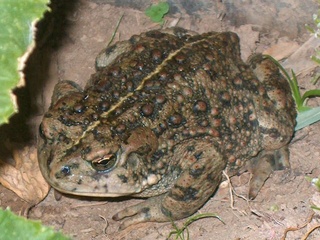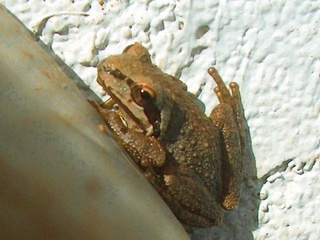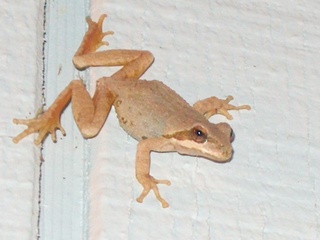Amphibians are cold-blooded animals that metamorphose from a juvenile water-breathing form to an adult air-breathing form. Unlike other land animals, amphibians lay eggs in water.
Amphibians are considered ecological indicators, because their populations are among the first to be harmed when an ecosystem is disrupted. For example, in the Yuba-Sutter area, frogs and toads can be quite common in yards where herbicides, pesticides, and fertilizers are not used. When harmful chemicals are applied, the amphibians disappear rapidly, and the population of annoying insects usually increases as a result. In recent decades, there has been a dramatic decline in amphibian populations around the world, with many amphibian species recently becoming threatened or extinct.
The bullfrog now common in our area was introduced by European immigrants. However, the amphibian species listed below are native to the Yuba-Sutter area, having lived here long before the arrival of Europeans.
 Western toad (Bufo boreas) in a garden in Marysville. Photo by queerbychoice.
Western toad (Bufo boreas) in a garden in Marysville. Photo by queerbychoice.
- long-toed salamander
- California slender salamander
- Western toad
- common ensatina
- Sierra tree frog
- foothill yellow-legged frog
- Western spadefoot toad
- California newt
 Sierra tree frogs (Pseudacris sierra) are common in residential yards in all parts of the Yuba and Sutter Counties. They change color seasonally between brown and green. This one, shown in October, hopped onto a garden hose that was wound on an exterior house wall. Photo by queerbychoice.
Sierra tree frogs (Pseudacris sierra) are common in residential yards in all parts of the Yuba and Sutter Counties. They change color seasonally between brown and green. This one, shown in October, hopped onto a garden hose that was wound on an exterior house wall. Photo by queerbychoice.  Sierra tree frog (Pseudacris sierra) on an exterior house wall in Marysville. Shown in June, this frog was probably green only two months earlier. Photo by queerbychoice.
Sierra tree frog (Pseudacris sierra) on an exterior house wall in Marysville. Shown in June, this frog was probably green only two months earlier. Photo by queerbychoice.
Links
Amphibian California Department of Fish and Game: California Wildlife Habitat Relationships System: Life History Accounts and Range Maps


